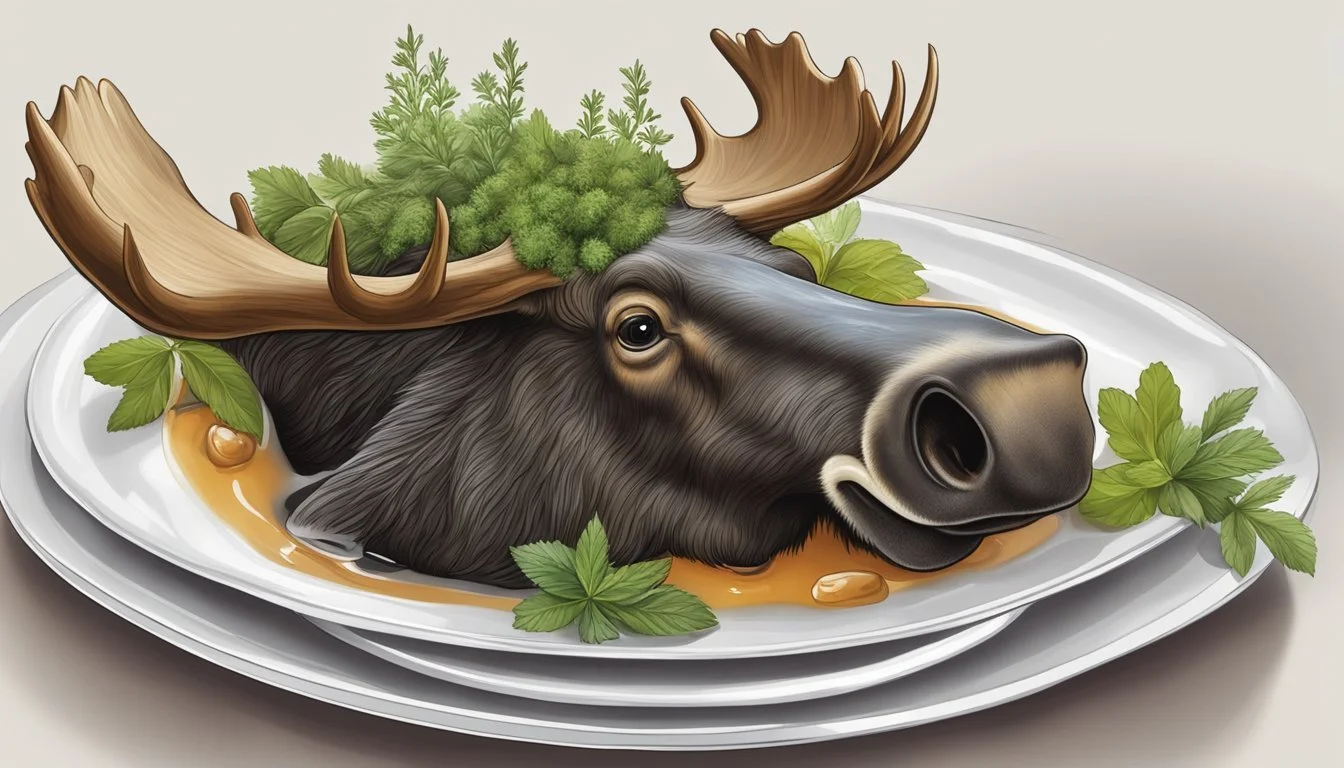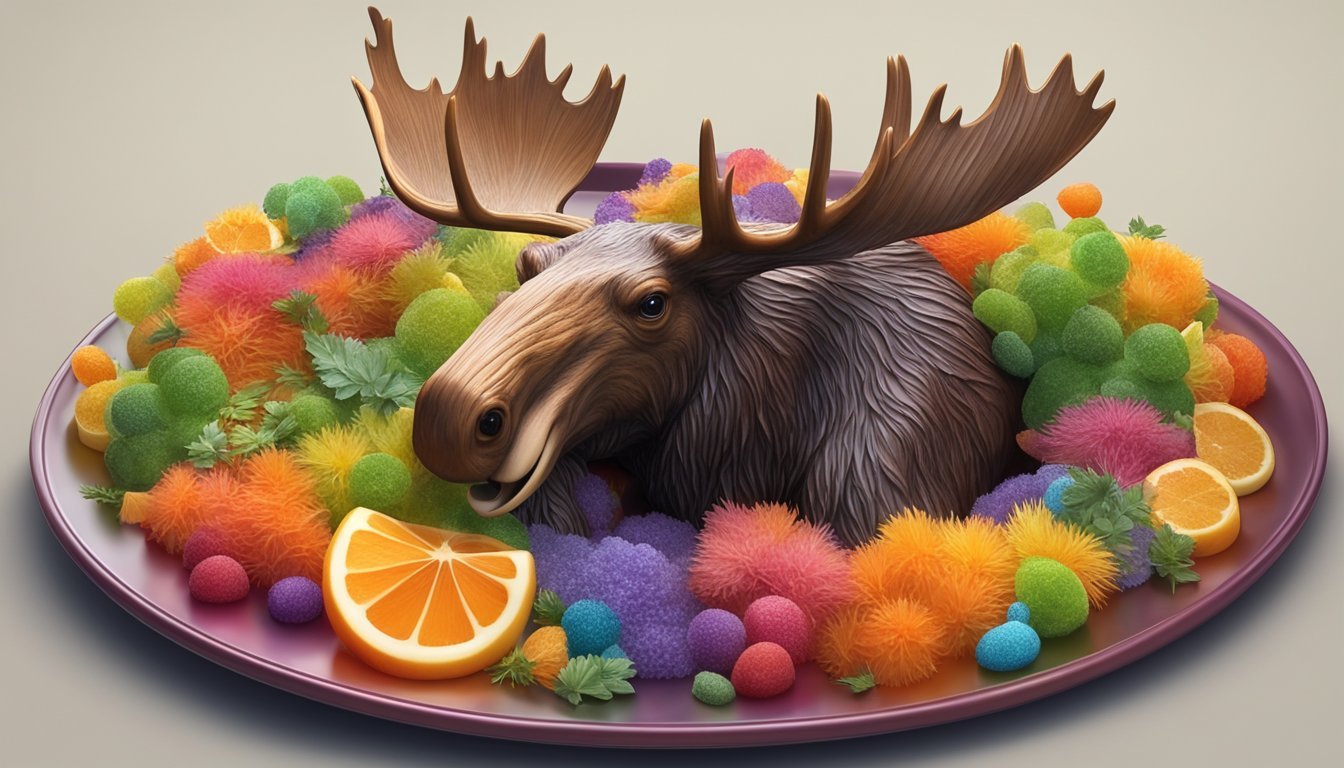Jellied Moose Nose Unveiling the Unique Canadian Culinary Tradition
Jellied moose nose is a traditional dish that hails from northern Canada and parts of Alaska, regarded as a delicacy in these regions. It's crafted from the meat of a moose's nose, combining both the dark meat found around the bones and the lighter meat from the bulb of the nose. This dish is a testament to the culinary creativity and resourcefulness found in local cuisines, making use of each part of the animal in respectful and sustainable practices handed down through generations.
The process of creating jellied moose nose begins with boiling the meat along with ingredients like onions, garlic, vinegar, and various spices, until it becomes tender. After cooling overnight in the cooking liquid, the bones and cartilage are removed, leaving behind the flavorful meat. This meat is then traditionally set in the same broth, which solidifies upon refrigeration due to the natural gelatin present in the moose's cartilage and bones.
Cultural significance and historical practices have kept the tradition of jellied moose nose alive in contemporary culinary circles. Its unique preparation and taste not only make it a point of interest for food enthusiasts but also serve as a conversation starter about the diverse food practices across different regions of Canada. It stands as a symbol of the country's rich heritage and the shared histories between the indigenous cultures and the later settlers who embraced these distinct local foods.
Origins and Cultural Significance
Jellied Moose Nose has a rich history intertwined with the Indigenous cultures of northern Canada and Alaska, reflecting the resourcefulness and traditions of the First Nations people.
Historical Roots
Jellied Moose Nose is a dish that originates from the northern regions of Canada and specific parts of Alaska. This delicacy has been part of the culinary practices of Indigenous peoples for generations, especially among the First Nations. They often utilized the entire animal for sustenance, demonstrating a deep respect for the wildlife that supported their communities.
Cultural Importance
The consumption of Jellied Moose Nose is a cultural hallmark for many Indigenous communities. It embodies the philosophy of using every part of an animal, thereby honoring the life taken to provide nourishment. This practice reiterates the connection between the land and its people, emphasizing a lifestyle of sustainability and gratitude.
Indigenous Traditions
Gwich'in Elder: In Gwich'in traditions, an elder might prepare the dish by first boiling then slicing the moose nose.
CBC Yukon: According to a feature by CBC Yukon, the preparation of Jellied Moose Nose is a time-honored tradition, often involving communal participation and knowledge passed down through generations.
Indigenous Traditions
The Gwich'in people, among others from the Northwest Canada and Alaska region, have maintained the preparation of Jellied Moose Nose as part of their cultural identity. Passed down through storytelling and practice, this dish serves not only as a means of sustenance but also as a cultural touchstone, connecting the newer generations with their ancestors and the teachings of living in harmony with nature.
What Is Jellied Moose Nose?
Jellied Moose Nose is a traditional dish that stands out for its distinctive preparation and taste, often garnering attention for its unique use of moose nose meat set in a textured jelly.
Definition and Description
Jellied Moose Nose is a delicacy originating from northern Canada, known for its unique texture and flavor. It is created by boiling parts of a moose's nose with seasonings like garlic, onions, vinegar, and spices until tender. The cooked nose is then chilled in its broth, which solidifies into a jelly. This dish differentiates itself by using both white and dark meat from the moose's nose - the white meat (What wine goes well with white meat?) from the bulb of the nose and the dark meat located around the bones.
The resulting product is a loaf-like shape that is sliced and served cold. Its taste and texture have been likened to European head cheese and are considered a celebration of wild game culinary traditions. The preparation of Jellied Moose Nose highlights the use of various moose head parts that would otherwise go unused, making it an emblem of resourceful and traditional cuisine.
The Moose: Anatomy and Habitat
Moose are the largest members of the deer family, with their habitat stretching across northern regions of North America, including Canada and Alaska. They are characterized by their long limbs, bulky bodies, distinctive hump on their back, and the males' sprawling antlers.
The nose of the moose, which is the central component of this dish, includes a bulbous shape made up of cartilage and bone surrounded by fur, lips, and other facial features. Moose are known for their keen senses, with the nose serving as a crucial part of their sensory system that is highly adapted to their environments. Their habitats are typically mixed landscapes with dense forests, marshes, or lakes, where they can find their preferred food sources.
Preparation and Cooking Techniques
Jellied Moose Nose is a dish that requires attention to detail, with specific cooking procedures and ingredients that contribute to its unique character. This section explores the technique involved from traditional practices to modern recipes.
Traditional Cooking Methods
Traditionally, Jellied Moose Nose begins by cleaning the moose nose and placing it into a pot of fresh water. It is essential to add flavorful ingredients like onion, garlic, a range of spices, and vinegar to the mix. The concoction is then brought to a boil and left to simmer until the nose becomes tender. This may take several hours, as slow cooking is key to infuse the meat with the rich flavors of the spices and aromatic vegetables.
Once boiled and tender, the nose is cooled, usually overnight, within the liquid to enhance the infusion of flavors. The next day, the meat is carefully removed, the bones and cartilage discarded, and the meat is sliced. This sliced meat is reminiscent of head cheese, a similar European dish.
The sliced meat is then arranged in a container, often a loaf pan, and the cooking broth — full of gelatin from the bones — is poured over it. This mixture is refrigerated until the broth sets into a jelly, encapsulating the slices of moose nose.
Modern Adaptations and Recipes
In more recent interpretations, chefs and home cooks alike have adapted the recipe to suit contemporary palates and cooking styles. While the steps of boiling and jellification remain consistent, variations are introduced primarily through the use of different spice combinations and presentation methods.
Modern recipes may call for precise measurements of pickling spices or suggest the inclusion of other flavor enhancers such as bay leaves or whole peppercorns. The addition of salt remains imperative for both flavor and preservation.
Some cooks have moved from traditional pot boiling to using slow cookers to maintain an even temperature, ensuring that the meat cooks evenly without the need for constant supervision. In both traditional and modern methods, it's crucial that the meat is completely covered with broth to set properly into the jelly format.
Once set, the Jellied Moose Nose can be sliced thin and served cold, often accompanied by crackers or bread. The flavors, now melded and mellow, offer an intriguing taste distinctly tied to this unique Canadian delicacy.
Serving and Presentation
Jellied moose nose is traditionally served chilled, solidified into a jelly-like consistency. This dish, known for its similarity in texture to terrines or meat jellies, is typically sliced for serving.
Accompaniments and Pairings
The savory and distinctive flavors of jellied moose nose pair well with a variety of accompaniments. Traditional pairings include:
Bread: A crisp, hearty bread serves as an excellent base to balance the rich and gelatinous nature of the dish.
Crackers: Simple salted crackers are often provided for a contrasting crunch.
Meat Pairings: The dark meat of jellied moose nose may be paired with other meats such as thinly sliced ham, enhancing its corned beef flavor profile.
Condiments: Mustard or a sharp relish can complement and cut through the richness of the dish.
Suggested Servings
To serve jellied moose nose, one should:
Slice the chilled jelly into thin, even slices, showcasing the meat's texture.
Arrange the slices neatly on a platter, perhaps in the shape of the original loaf pan for visual appeal.
Serving Suggestions:
As an appetizer: Serve small portions on individual plates with the suggested pairings.
As part of a charcuterie (What wine goes well with charcuterie?) board: Feature the jellied moose nose alongside other cold cuts for an adventurous twist.
Main Course: Present thicker slices as a main dish, reminiscent of a classic meatloaf pan serving, stewed to tender perfection.
Comparison to Other Delicacies
Jellied moose nose is a unique part of Canadian culinary tradition, comparable to various national and international delicacies that utilize uncommon parts of animals.
Within Canada
Jellied moose nose is not the only unusual dish in Canada known for its use of animal parts often overlooked in standard North American cuisine. For example, bone marrow is another delicacy appreciated for its rich flavor, often used as a spread or in cooking. Though not as widespread as jellied moose nose, which is rooted in the wilderness traditions of northern Canada, bone marrow shares a similar position as a conversation starter at the dining table. Many Canadian dishes that highlight less commonly used animal parts also tend to emphasize the importance of sustainability and utilize local ingredients, mirroring the ethos from which jellied moose nose originated.
International Comparisons
Internationally, jellied moose nose can be likened to various traditional offal dishes. Europe, for instance, offers delicacies such as head cheese, which closely resembles the preparation of jellied moose nose with its use of meat from a boiled head set into a gelatinous loaf.
Head Cheese: Similarity - Using meats from the head in a gelatin, Geographic Origin - Europe
Sausage: Similarity - Encases lesser-used animal parts, Geographic Origin - Globally Recognized
Pizza (with unconventional toppings like sausage): Similarity - Incorporates a versatile array of ingredients, including offal, Geographic Origin - Originated in Italy, Popular Worldwide
Much like jellied moose nose, these dishes utilize parts of an animal that would otherwise go unused, thereby honoring the animal and reducing waste. Each of these has deep cultural roots in their respective regions—just as jellied moose nose is cherished in the Arctic regions of North America for its cultural heritage.
Contemporary Interest and Media Coverage
Jellied Moose Nose, a unique Canadian delicacy, has piqued contemporary interest and earned media coverage in various forms, from in-depth feature pieces to surprising celebrity endorsements.
Feature Pieces
Atlas Obscura has been at the forefront of exploring unique global foods, and Jellied Moose Nose is no exception. They provide a cultural and historical context to this traditional dish, giving readers an insight into the process of preparation and the dish’s significance in indigenous communities in northwest Canada. The coverage has brought a spotlight to regional cuisine, showcasing the richness of culinary traditions that are less known to the mainstream.
Celebrity Endorsements
Famed culinary expert Andrew Zimmern, known for his readiness to explore unusual foods from around the world, has highlighted Jellied Moose Nose on his platforms, describing the dish's complex flavors and texture. This kind of endorsement from a celebrity chef sheds light on the dish's culinary intrigue and has introduced the delicacy to a broader audience. His recognition of Jellied Moose Nose underscores its status as not merely a novelty but as a respected component of Canada's diverse food landscape.







